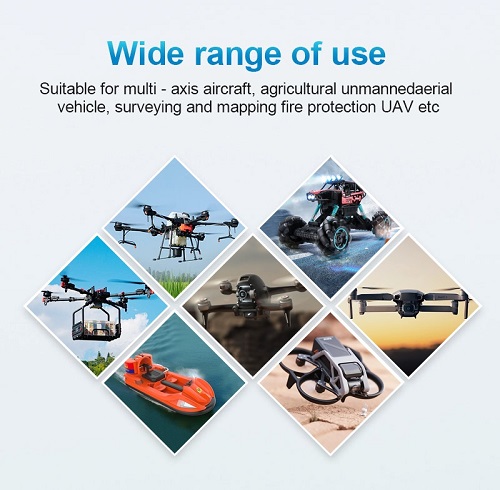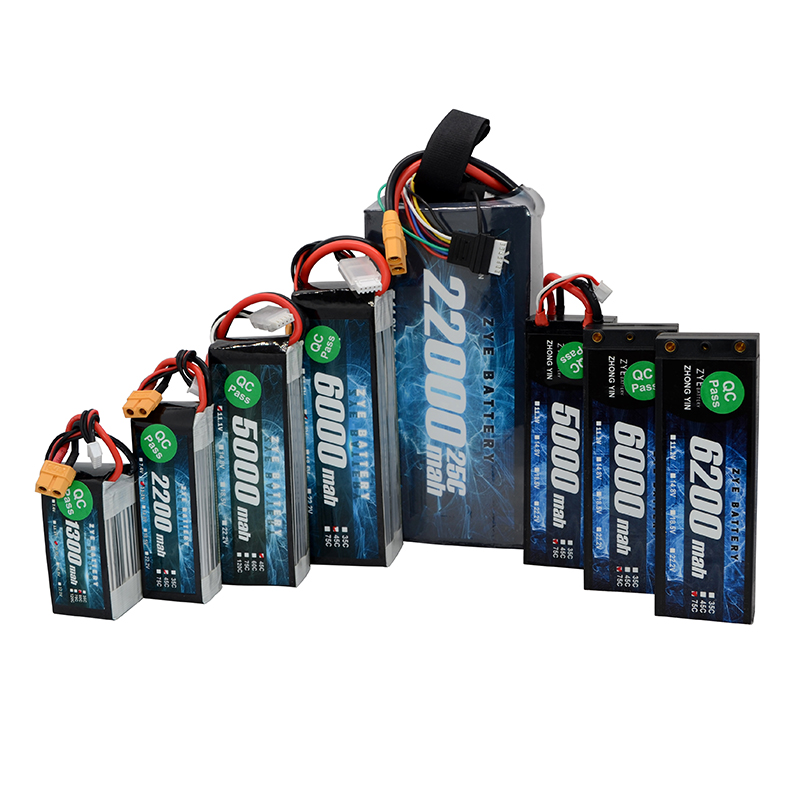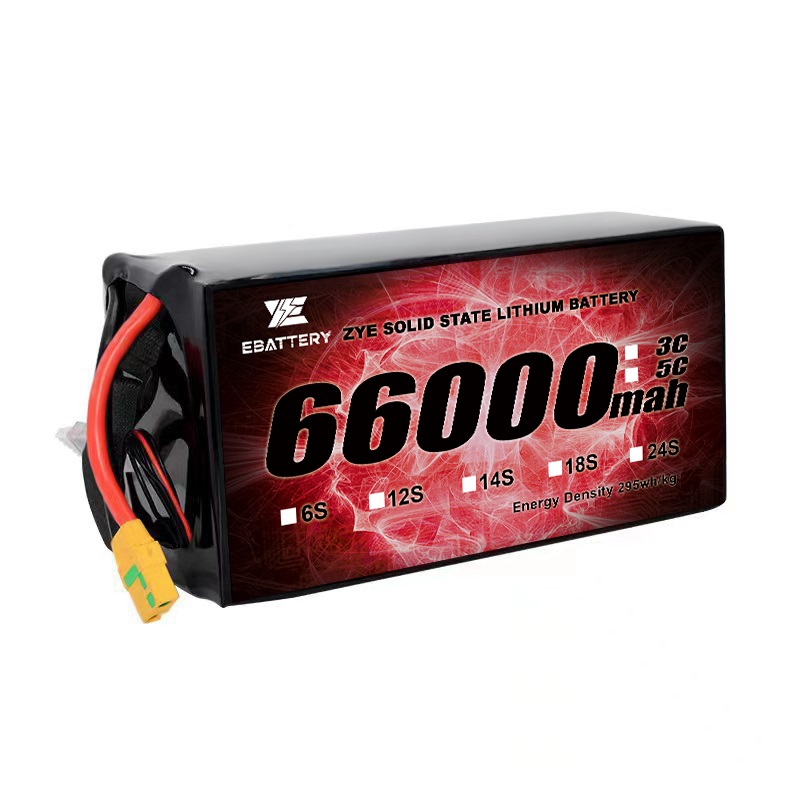How Does Altitude Impact Drone Battery Efficiency?
Drones have revolutionized various industries, from aerial photography to package delivery. However, one crucial factor that affects their performance is altitude. Understanding how altitude impacts drone battery efficiency is essential for pilots and enthusiasts alike. In this comprehensive guide, we'll explore the relationship between altitude and drone battery performance, shedding light on the challenges faced by unmanned aerial vehicles (UAVs) in high-altitude environments.
Why Do Drone Batteries Drain Faster at High Altitudes?
When flying drones at higher altitudes, pilots often notice a significant decrease in battery life. This phenomenon is not just a coincidence but a result of several factors that come into play as the drone ascends to greater heights.
The Impact of Atmospheric Pressure on Battery Performance
As a drone climbs to higher altitudes, it encounters lower atmospheric pressure. This reduction in pressure affects the drone battery in several ways:
1. Decreased oxygen levels: At higher altitudes, the reduced atmospheric pressure leads to lower oxygen levels. This decrease in oxygen concentration affects the chemical reactions that power batteries. Since these reactions rely on the presence of oxygen, its reduction slows down the process, which in turn lowers the efficiency of the battery. As a result, the drone’s battery life may decrease, and it may not perform at its optimal capacity during flights at higher altitudes.
2. Increased internal resistance: The drop in air pressure at elevated altitudes can cause the electrolyte in lithium-polymer (LiPo) batteries to expand. This expansion leads to an increase in internal resistance within the battery. Higher resistance means that the battery struggles to deliver the necessary power to the drone’s motors, which negatively impacts performance, reduces flight time, and can cause the drone to consume more energy than usual.
3. Thermal management challenges: The thinner air at high altitudes makes it more difficult for batteries to dissipate heat. This lack of efficient cooling can lead to an increase in the internal temperature of the battery. If the battery becomes too hot, its performance may degrade, and in extreme cases, it could result in overheating, shortening the battery’s life or causing damage. Therefore, operating drones at higher altitudes presents thermal management challenges that must be addressed to maintain safe and efficient performance.
Temperature Fluctuations and Their Effect on Battery Life
High-altitude environments often experience more extreme temperature fluctuations, which can significantly impact drone battery performance:
1. Cold temperatures: At high altitudes, cold temperatures can severely impact drone battery performance. In colder conditions, batteries lose capacity and discharge more quickly, reducing flight time and overall efficiency. The lower temperatures cause the battery’s chemical reactions to slow down, leading to decreased power output.
2. Rapid temperature changes: High-altitude environments often experience rapid shifts in temperature, which can be problematic for drone batteries. These sudden changes can cause condensation to form inside the battery, potentially leading to short circuits or internal damage. This moisture buildup can compromise the battery’s safety and functionality.
3. Increased power demand: To maintain stability in the cold, thinner air found at high altitudes, drones may need to use more power, especially during flight maneuvers. This increased power demand accelerates battery drain, further reducing the drone's operational time and putting additional strain on the battery.
Air Density Effects: How Does Altitude Reduce Battery Performance?
Air density plays a crucial role in drone flight and battery efficiency. As altitude increases, air density decreases, creating a challenging environment for drones to operate in.
The Relationship Between Air Density and Propeller Efficiency
Drones rely on their propellers to generate lift and maintain flight. However, the effectiveness of these propellers is directly tied to air density:
1. Reduced lift: In thinner air, propellers generate less lift per revolution, requiring the motors to work harder and consume more power.
2. Increased power consumption: To compensate for the reduced lift, drones must increase their motor speeds, leading to higher power draw from the battery.
3. Diminished cooling: The less dense air also reduces the cooling effect on motors and electronic components, potentially causing overheating and further reducing efficiency.
Compensating for Reduced Air Density: Battery Drain Implications
To maintain stable flight in low-density air, drones must make several adjustments, all of which impact battery life:
1. Higher RPM: Increasing propeller speed to generate sufficient lift leads to faster battery drain.
2. Altered flight characteristics: Drones may need to adjust their flight patterns or hover at higher power settings, consuming more energy.
3. Reduced payload capacity: The decreased lift may require operators to reduce payload weight, limiting the drone's capabilities.

Why Do Drones Lose Power Faster in Mountains?
Mountain environments present unique challenges for drone operations, often leading to accelerated power loss and reduced flight times.
The Combined Effects of Altitude and Terrain on Drone Performance
Flying in mountainous regions exposes drones to a combination of factors that can quickly deplete drone battery reserves:
1. Rapid altitude changes: Navigating mountainous terrain often involves frequent changes in altitude, requiring constant adjustments to motor output and power consumption.
2. Wind patterns: Mountains can create unpredictable wind patterns, forcing drones to work harder to maintain stability and position.
3. Temperature variations: Mountain environments can experience dramatic temperature shifts, affecting battery chemistry and performance.
Strategies for Maximizing Battery Life in High-Altitude Environments
While flying in high-altitude and mountainous areas presents challenges, there are strategies to optimize drone battery performance:
1. Use high-capacity batteries: Opt for batteries with higher capacities to extend flight times in demanding conditions.
2. Implement smart flight planning: Plan routes that minimize unnecessary altitude changes and take advantage of natural terrain features.
3. Monitor battery temperature: Keep a close eye on battery temperature and allow for cooling periods if necessary.
4. Adjust flight parameters: Reduce speed and avoid aggressive maneuvers to conserve power in high-altitude settings.
5. Consider specialized propellers: Some manufacturers offer propellers designed for high-altitude performance, which can improve efficiency.
Understanding the impact of altitude on drone battery efficiency is crucial for safe and successful operations in challenging environments. By recognizing the factors that affect battery performance at higher altitudes, drone operators can make informed decisions and implement strategies to maximize flight times and overall efficiency.
For those looking to enhance their drone's performance in high-altitude conditions, consider exploring the advanced battery solutions offered by Ebattery. Our cutting-edge drone batteries are engineered to deliver optimal performance across a wide range of altitudes and environmental conditions. To learn more about how our batteries can elevate your drone operations, contact us at cathy@zyepower.com.
References
1. Smith, J. (2022). "Altitude Effects on Unmanned Aerial Vehicle Performance." Journal of Aerospace Engineering, 35(2), 145-160.
2. Johnson, A., & Brown, T. (2021). "Battery Efficiency in High-Altitude Drone Operations." International Journal of Aviation Technology, 18(3), 278-295.
3. Zhang, L., et al. (2023). "Optimizing Drone Battery Life for Mountain Search and Rescue Operations." Journal of Emergency Management, 41(1), 52-68.
4. Rodriguez, M. (2022). "The Impact of Air Density on Drone Propulsion Systems." Advances in Aeronautical Sciences, 29(4), 412-428.
5. Chen, H., & Davis, R. (2021). "Thermal Management Strategies for High-Altitude Drone Batteries." Energy Storage Materials, 14(2), 189-205.
























































